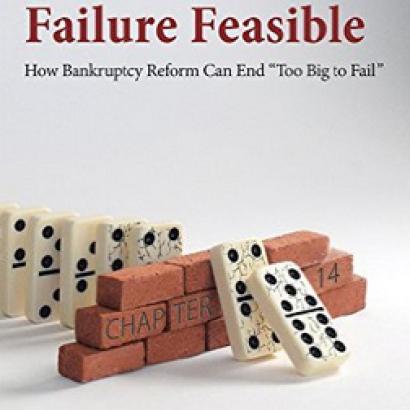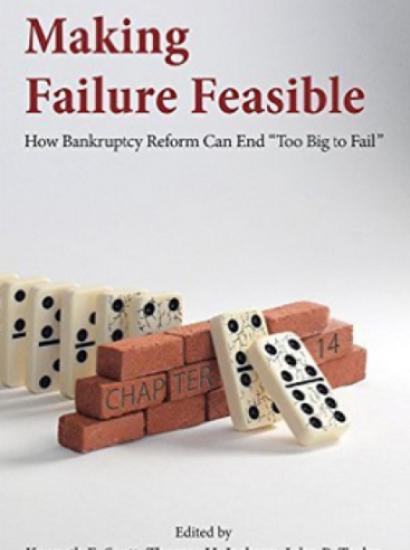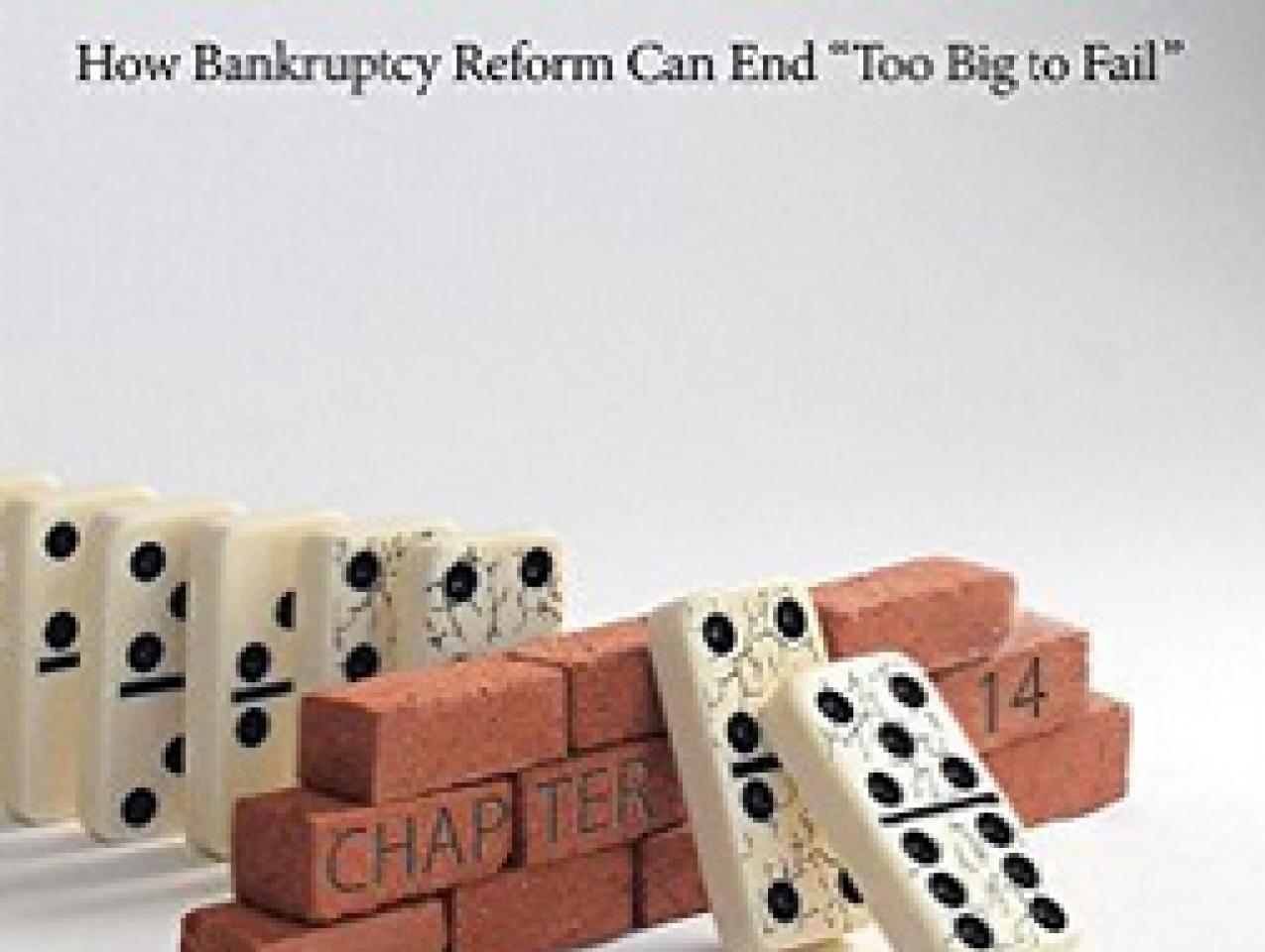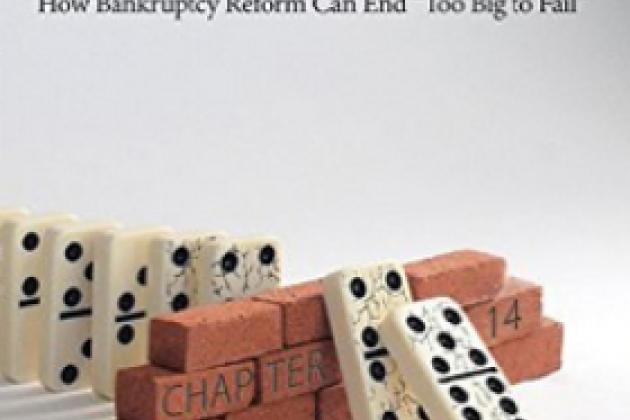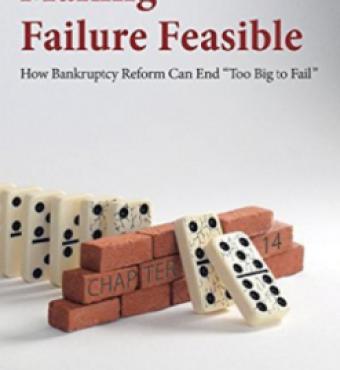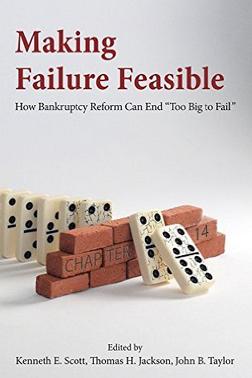- Economics
- Monetary Policy
- Law & Policy
- Regulation & Property Rights
- History
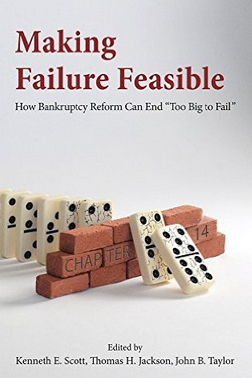
In 2012, building off work first published in 2010, the Resolution Project proposed that a new Chapter 14 be added to the Bankruptcy Code, exclusively designed to deal with the reorganization or liquidation of the nation's large financial institutions. In Making Failure Feasible, the contributors expand on their proposal to improve the prospect that our largest financial institutions-particularly with prebankruptcy planning-could be successfully reorganized or liquidated pursuant to the rule of law and, in doing so, both make resolution planning pursuant to Title I of Dodd-Frank more fruitful and make reliance on administrative proceedings pursuant to Title II of Dodd-Frank largely unnecessary.
This book highlights the problems of dealing with large financial institutions in distress, without incurring either spillover distress to other institutions or relying on government bailout, and Chapter 14's responses to those twin issues, as well as recommending other measures that would facilitate successful resolutions. The contributors first outline the basic features of Chapter 14 as originally proposed in 2012 vis-à-vis the reorganization or liquidation of an operating company and point to their continuation as well as additional features to ensure the quick resolution of large financial institutions that would not depend on government discretion and would mesh with emerging ideas about cross-border resolution.
The remaining chapters provide the context for reform, outline the fundamental principles of reform, show how reform would work in practice, and show how Chapter 14, as envisioned in this book, would be a substantial advance on administrative-focused resolution procedures.
Thomas H. Jackson is a distinguished university professor and president emeritus from the University of Rochester. Formerly a professor at Stanford and Harvard Law Schools and dean at the University of Virginia School of Law, he is currently a member of the Resolution Project at the Hoover Institution's Working Group on Economic Policy.
Kenneth E. Scott passed away in June 2016. He was a Hoover Institution senior research fellow and the Ralph M. Parsons Professor Emeritus of Law and Business at Stanford Law School. He chaired the Resolution Project at the Hoover Working Group on Economic Policy and was a leading scholar in the fields of corporate finance reform and corporate governance who wrote extensively on federal banking regulation.
John B. Taylor is the George P. Shultz Senior Fellow in Economics at the Hoover Institution, chairs the Hoover Working Group on Economic Policy, and is the Mary and Robert Raymond Professor of Economics at Stanford University.
Contributors: Jacopo Carmassi, Darrell Duffie, Simon Gleeson, Richard J. Herring, Thomas F. Huertas, Thomas H. Jackson, Emily C. Kapur, William F. Kroener III, Kenneth E. Scott, David Skeel, John B. Taylor
Download PDFs of individual chapters below.
Preface
By John B. Taylor
Chapter 1: The Context for Bankruptcy Resolutions
By Kenneth E. Scott
Chapter 2: Building on Bankruptcy: A Revised Chapter 14 Proposal for the Recapitalization, Reorganization, or Liquidation of Large Financial Institutions
By Thomas H. Jackson
Chapter 3: Financing Systemically Important Financial Institutions in Bankruptcy
By David A. Skeel Jr.
Chapter 4: Resolution of Failing Central Counterparties
By Darrell Duffie
Chapter 5: The Consequences of Chapter 14 for International Recognition of US Bank Resolution Action
By Simon Gleeson
Chapter 6: A Resolvable Bank
By Thomas F. Huertas
Chapter 7: The Next Lehman Bankruptcy
By Emily Kapur
Chapter 8: Revised Chapter 14 2.0 and Living Will Requirements under the Dodd- Frank Act
By William F. Kroener III
Chapter 9: The Cross- Border Challenge in Resolving Global Systemically Important Banks
By Jacopo Carmassi and Richard Herring







